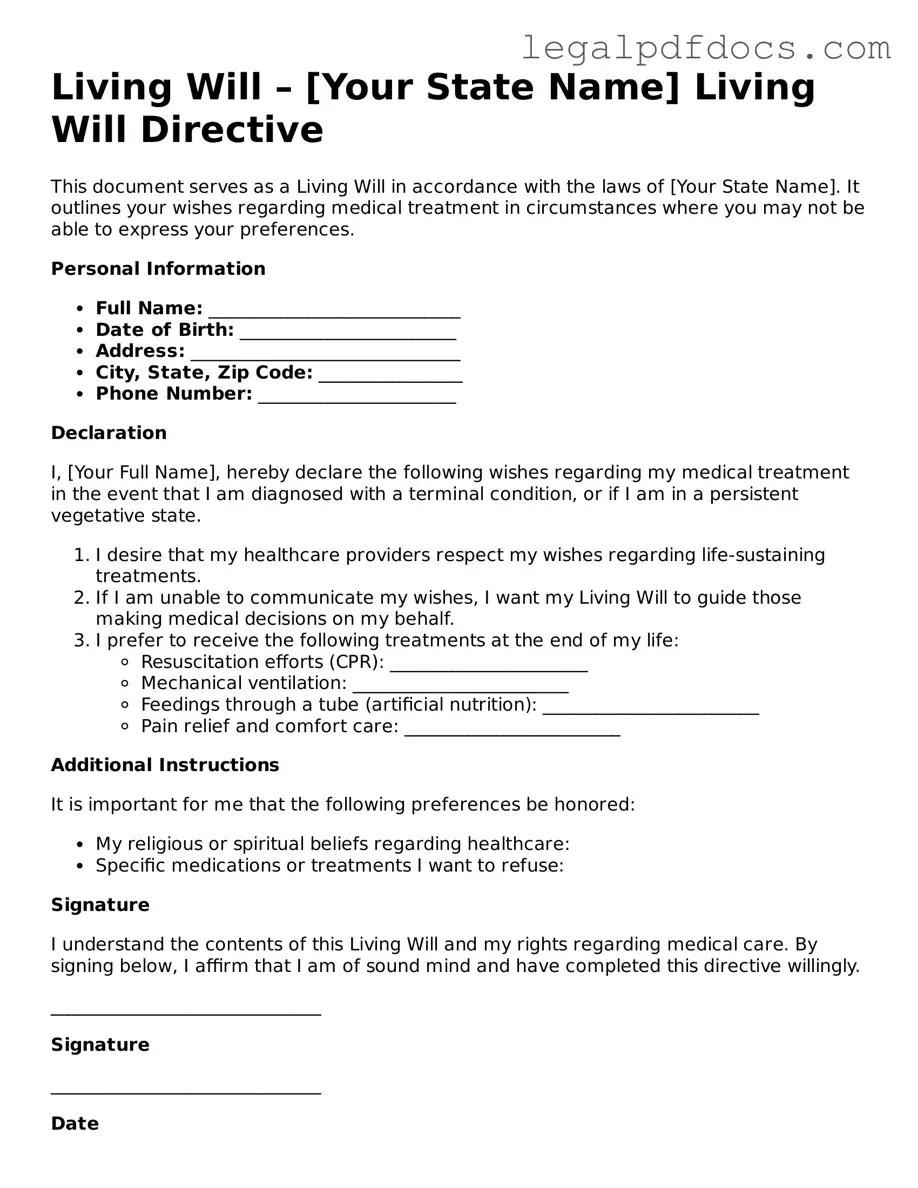Living Will Template
A Living Will is a legal document that outlines an individual's preferences regarding medical treatment in situations where they may no longer be able to communicate their wishes. This form provides guidance to healthcare providers and loved ones about the types of medical interventions a person desires or does not desire at the end of life. Understanding the importance of this document can help ensure that your healthcare preferences are respected.
To take control of your medical decisions, consider filling out a Living Will form by clicking the button below.
Open Living Will Editor Here
